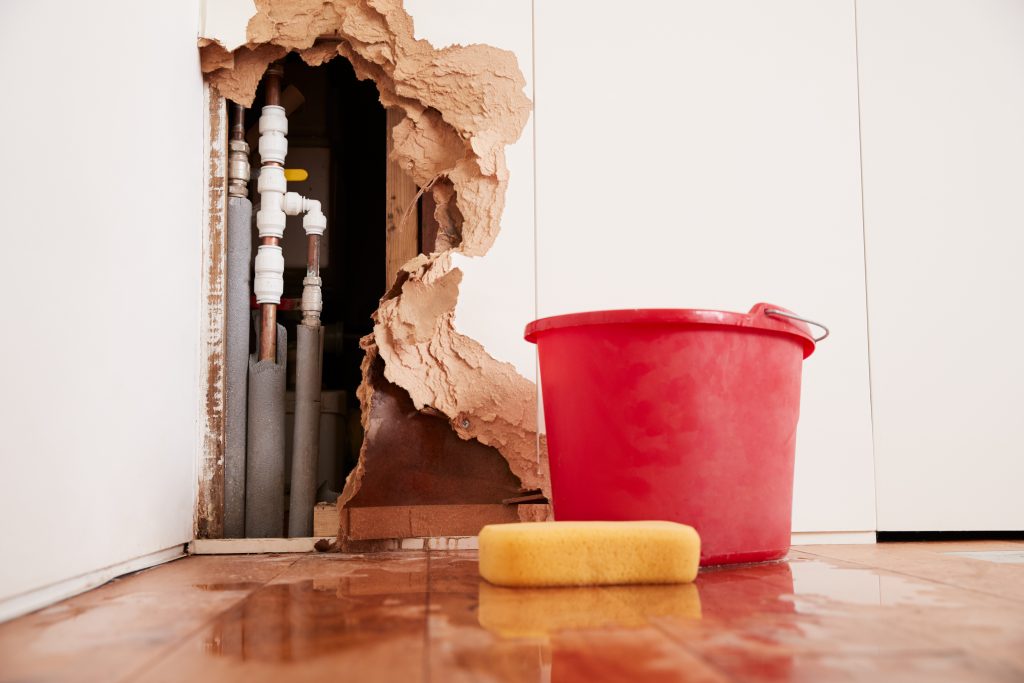Overview To Water Leakage Detection In The House
Overview To Water Leakage Detection In The House
Blog Article
The content following next in relation to Detecting hidden plumbing leaks is exceedingly engaging. Don't miss out on it.

Early detection of dripping water lines can alleviate a potential catastrophe. In addition to conserving you money, it will decrease the aggravation and also frustration. The moment you locate a leakage, calling your plumber for repair work is the very best solution. Nevertheless, some tiny water leaks might not show up. Here are some hacks that help if you can not find it with your naked eyes.
1. Examine the Water Meter
Every house has a water meter. Examining it is a proven way that assists you find leakages. For beginners, switch off all the water sources. Make sure nobody will certainly purge, make use of the tap, shower, run the washing maker or dish washer. From there, most likely to the meter and also watch if it will certainly transform. Since no one is utilizing it, there should be no activities. If it relocates, that shows a fast-moving leakage. Also, if you discover no changes, wait an hour or more and check back again. This suggests you might have a sluggish leak that could also be below ground.
2. Inspect Water Consumption
If you find unexpected adjustments, regardless of your usage being the very same, it means that you have leakages in your plumbing system. An abrupt spike in your expense indicates a fast-moving leak.
A stable rise every month, also with the same routines, reveals you have a slow-moving leak that's additionally slowly intensifying. Call a plumber to extensively check your property, particularly if you really feel a warm location on your flooring with piping underneath.
3. Do a Food Coloring Test
When it pertains to water intake, 30% comes from bathrooms. Test to see if they are running effectively. Drop specks of food color in the container and also wait 10 minutes. If the color somehow infiltrates your dish throughout that time without flushing, there's a leakage in between the tank as well as dish.
4. Asses Outside Lines
Do not forget to check your exterior water lines as well. Ought to water leak out of the connection, you have a loosened rubber gasket. One small leak can waste tons of water and also surge your water bill.
5. Inspect as well as Evaluate the Circumstance
Property owners need to make it a behavior to inspect under the sink counters and also inside cabinets for any kind of bad odor or mold development. These two warnings suggest a leak so punctual attention is called for. Doing routine inspections, also bi-annually, can conserve you from a significant trouble.
Check for stainings and also deteriorating as most home appliances and also pipelines have a life expectancy. If you believe leaking water lines in your plumbing system, do not wait for it to escalate.
Early discovery of dripping water lines can alleviate a potential disaster. Some small water leakages may not be visible. Examining it is a guaranteed means that helps you discover leaks. One little leak can waste heaps of water and surge your water expense.
If you think leaking water lines in your plumbing system, don't wait for it to escalate.
WARNING SIGNS OF WATER LEAKAGE BEHIND THE WALL
PERSISTENT MUSTY ODORS
As water slowly drips from a leaky pipe inside the wall, flooring and sheetrock stay damp and develop an odor similar to wet cardboard. It generates a musty smell that can help you find hidden leaks.
MOLD IN UNUSUAL AREAS
Mold usually grows in wet areas like kitchens, baths and laundry rooms. If you spot the stuff on walls or baseboards in other rooms of the house, it’s a good indicator of undetected water leaks.
STAINS THAT GROW
When mold thrives around a leaky pipe, it sometimes takes hold on the inside surface of the affected wall. A growing stain on otherwise clean sheetrock is often your sign of a hidden plumbing problem.
PEELING OR BUBBLING WALLPAPER / PAINT
This clue is easy to miss in rooms that don’t get much use. When you see wallpaper separating along seams or paint bubbling or flaking off the wall, blame sheetrock that stays wet because of an undetected leak.
BUCKLED CEILINGS AND STAINED FLOORS
If ceilings or floors in bathrooms, kitchens or laundry areas develop structural problems, don’t rule out constant damp inside the walls. Wet sheetrock can affect adjacent framing, flooring and ceilings.
https://www.servicemasterbyzaba.com/blog/how-to-detect-water-leakage-in-walls/

Do you like reading up on Finding hidden leaks? Make a short review below. We would be pleased to find out your insights about this write up. Hoping to see you back again in the near future. Appreciated our blog posting? Please share it. Help others locate it. I appreciate reading our article about Detecting hidden plumbing leaks.
Report this page